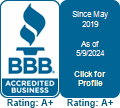The longer you own your car, the more likely it is that it’ll get a scratch or two. While most scratches look like any other to an untrained eye, depending on their severity, they can have a significant impact on the long-term health of your vehicle.
When you start to notice scratches on your car, it’s best to take it to a professional mechanic for a thorough inspection. You might want to repair the damage yourself with car scratch remover products or touch up paint to save on expenses. While those are options, using them correctly is more complicated than you might think. Your mechanic will have the expertise and all the right tools to make sure that your car comes out looking good as new.
However, self-repair on surface scratches isn’t impossible and can be a relatively simple process if done correctly. If going to a mechanic isn’t an option, we’ve provided a few tips to help you get the job done yourself.
Recognize the Different Types of Scratches
There’s a world of difference between a light scratch and a deep scratch. For proper car scratch repair, you should determine the extent of the damage and whether fixing it yourself is an option. There are three types of scratches, each with varying levels of severity:
- Minor Scratches or Marks – These are the most superficial scratches and the most easily fixed. A scratch is minor when something scrapes against your car but doesn’t penetrate the clear coat. If you don’t see metal beneath the scratch, then the damage is likely shallow.
- Paint Scratches – These are scratches that penetrate down to the enamel layer of your vehicle. They require more effort to remove than minor scratches but are still removable if you have the proper tools.
- Deep or Primer Scratches – These are the deepest and most serious types of scratches, penetrating past your car’s paint and clear coat and to the bare metal. Deeper scratches require the most work to fix and are best handled by a professional mechanic.
Acquire Proper Tools
There are several tools that you can use for a proper DIY scratch repair. For more minor scratches, you can use rubbing compounds, such as Turtle Wax, available over the counter. Simply clean the affected area with soap, water, and a microfiber towel, apply a bit of the polishing compound, and lightly press it into the surface with circular motions to remove scratches.
For milder scratches beneath the clear coat, you can purchase scratch removal kits. They’ll contain several essentials to get the job done, such as buff pads and scratch removal solutions. Make sure to wash your car and dry it before gently working the remover into the scratch. Then, buff the area and polish it to return your vehicle to a mirror shine.
Fixing the deepest scratches requires car paint repair and polishing. It’s an extensive process best left to professionals.
If you want to ensure your car stays in tip-top shape inside and out, schedule a car repair appointment at Desoto Collision Center today!



